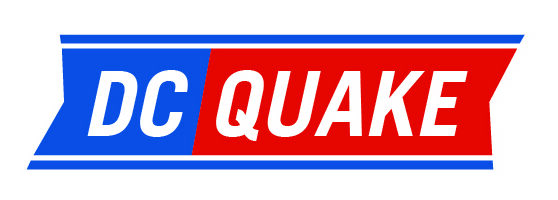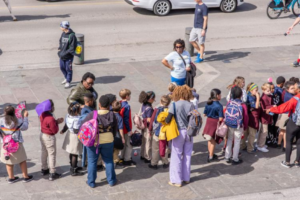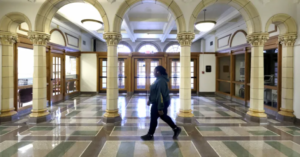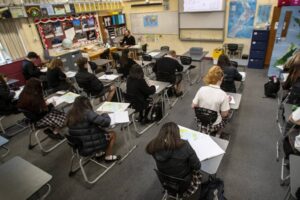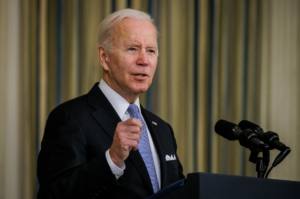The financial side of school choice
8 min read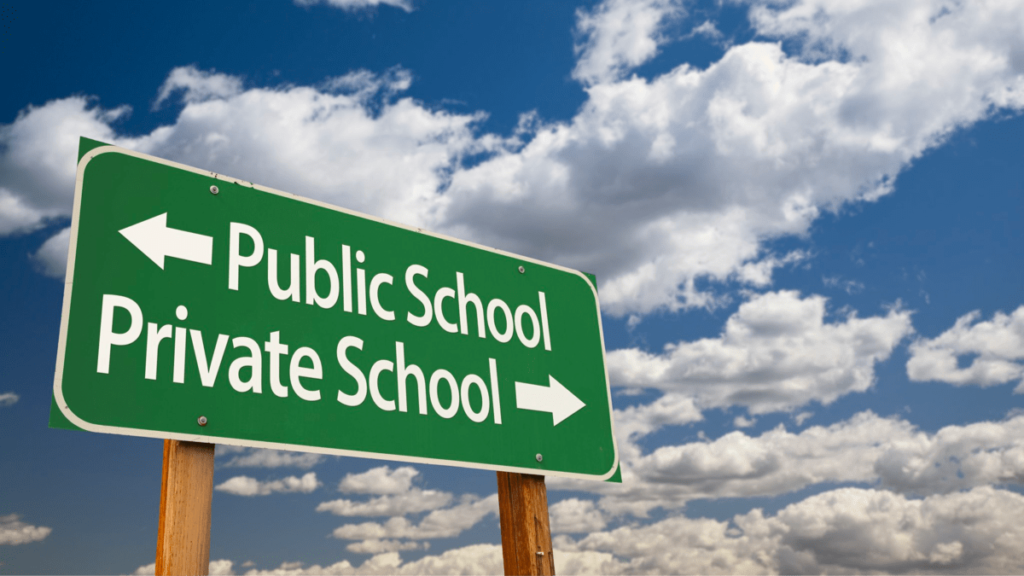
Education has become one of the dominant discussion points at the Montana Legislature over the past few months. Proposals affecting public schools have run the gamut, from policy changes centered on transgender athletes and the Pledge of Allegiance to budgetary questions involving hundreds of millions of dollars in federal relief funding. Several education initiatives have garnered widespread support from a broad swath of stakeholders, including a bill to incentivize pay increases for starting teachers that became law last month.
But heading into the 2021 session, public education advocates were on especially high alert for any measures aimed at expanding what supporters call school choice. The phrase has come to symbolize a stark dividing line on K-12 education, and quickly materialized last month in a high-profile charter school bill that lacked sufficient support from lawmakers. Supporters assert that strengthening access to non-public institutions gives parents and students a chance to pursue educational models that best fit their individual needs. Opponents counter that certain policy changes threaten to undermine the quality of public school systems and steer public taxpayer dollars into private hands. That last argument has been a primary sticking point in Helena, with two bills continuing to fuel a robust discussion about the fiscal side of education.
On Feb. 15, Rep. Sue Vinton, R-Billings, gave lawmakers on the House Education Committee their first taste of House Bill 329. Dubbed the Special Needs Equal Opportunity Act, HB 329 would direct public school districts to return the funding associated with a special needs student to the Office of Public Instruction if that student chooses to pursue other educational avenues. The money, which the Legislature’s fiscal division estimates would amount to roughly $7,800 per affected student next school year, would then be set aside by OPI in a savings account and used to reimburse parents of those students for a range of expenses, including school tuition, tutoring, textbooks and educational therapies.
“Why do we need [education savings accounts]?” Vinton posed to the committee. “Families need flexibility, in non-pandemic times. Challenges our students, and particularly our special education students, are facing right now demand even more flexibility. Those families with students who have special needs have been greatly impacted by the loss of face-to-face learning. Education savings accounts help families while giving public schools more resources for fewer children.”
Vinton has said she worked with Gov. Greg Gianforte to craft HB 329, and the governor supports the bill. Additional backers include the Christian conservative nonprofit Montana Family Foundation and the state chapter of Americans for Prosperity, as well as Superintendent of Public Instruction Elsie Arntzen. Arntzen told the Senate Education and Cultural Resources Committee last week that she’s “very pleased” with HB 329.
“It centers the focus on our children and our students,” she said. “I was just talking to a gentleman in the hallway who represents disabilities, and I said to him, ‘Let’s talk about our abilities, and focus on the success of our abilities. Not where, not whom, not when, but let’s focus specifically on the student and the student needs.’ I believe this bill does that.”
That assessment is being actively challenged by the Montana School Boards Association, the Montana Federation of Public Employees and a handful of other groups that make up the Montana Public Education Center. Over the past six weeks, they’ve maintained that HB 329 would bleed taxpayer funds from public schools to benefit private educational institutions. A fiscal note produced by the Legislative Fiscal Division estimated that 23,410 students across Montana would be eligible for the education savings accounts established by the bill, and that if all those students participated, public schools would lose $180 million a year in state funding and local property taxes.
The fiscal projection for HB 329 does note that no more than 100 students are actually expected to participate in the savings account program, which would put the total money redirected from public schools at $780,800. However, Debra Silk, associate executive director and general counsel for the Montana School Boards Association, questions the accuracy of that estimate. She told Montana Free Press that MTSBA suggested to lawmakers that if they were going to pass the bill based on the estimate, they should cap the program at 100 students per year. “Otherwise,” Silk said, “we’re all just guessing.” No such amendment has been proposed.
HB 329 opponents also note that even if some parents who participate in the program decide to later re-enroll their child in a public school, there’s no mechanism to transfer money back to the district from OPI. And, Silk said, just because a special needs student leaves to enroll in a private school or program doesn’t mean the district no longer has an obligation to that student under state and federal laws.
“Let’s say that parents enroll the child in a private school [and] the private school doesn’t have the ability to serve all of the needs of that child,” Silk said. “The district would still have an obligation to provide services to that child because under Montana law, if a student with disabilities who qualifies under [the federal Individuals with Disabilities Education Act] lives within the boundaries of a district, that district is required to provide services to that child.”
The other argument raised by education stakeholders is that HB 329 likely violates the Montana Constitution, which prohibits the Legislature from appropriating state funds to a private individual, association or corporation not under the control of the state. The issue was presented in a legal review prepared by the Legislative Services Division, as was a second potential constitutional question relating to payments made from state coffers without a legal appropriation. If HB 329 passes, Silk said, “I think you will see litigation on constitutional grounds, and potentially on other grounds as well.”
The prospect of such a lawsuit has not escaped lawmakers’ attention. During deliberations on the House floor last week, Rep. Moffie Funk, D-Helena, pivoted her opposition to HB 329 into a plea to her colleagues on that very point.
“Please, could we stop bringing bills that we know are going to be litigated?” Funk said. “Our public coffers are going to be bled dry, and then we really will be in a world of hurt.”
HB 329 passed the House last month on a straight party-line vote.
Though less direct, a fiscal change sought in House Bill 279 has highlighted the same dividing lines on school choice this spring. The bill, carried by Rep. Seth Berglee, R-Joliet, aims to raise the tax credit cap for donations to the state’s scholarship program from $150 to $200,000. Berglee told MTFP via email that the change would allow students to pursue different educational opportunities that they otherwise couldn’t afford. The bill has again attracted the support of Gianforte and Arntzen, along with several conservative policy organizations. And it’s been billed by proponents as an opportunity to enhance Montana’s focus on the individual educational needs of students.
“This is a bill that would dramatically increase access to K-12 education opportunities for Montana students regardless of whether they choose to attend a private school or a public school,” Berglee told the House Education Committee in late February. “It will also ensure that the Montana tax credit scholarship that was passed several sessions ago and was recently upheld by the Montana Supreme Court will become usable for Montana families.”
The scholarship program was first established by the Legislature in 2015, allowing individuals to get a dollar-for-dollar tax credit on up to $150 donated toward private school scholarships or toward supplemental funding for certain public school regions or large districts. The state initially opted to exclude religious private schools from the tax credit program, citing a constitutional prohibition on state funding for religious groups. A lengthy legal battle ensued, culminating in a U.S. Supreme Court ruling last summer that Montana’s program could not disqualify schools on religious grounds. Berglee also proposed an aggregate cap of $3 million for tax credits granted under the program, but amended that cap before the House Appropriations Committee last week to $1 million in 2021 and $2 million in 2022.
Rep. John Fuller, R-Kalispell, stood in support of HB 279 on the House floor in late March, claiming that the necessity for the program — and the tax credit increases proposed by Berglee — was a reflection of parental dissatisfaction with the monopolization of the public school system.
“Regardless of the argument that’s being used, the bottom line is that this program will not work if public schools will just adapt and improvise to the needs of the people and the parents of the students that are going there,” Fuller said.
The same coalition opposing HB 329 has drawn a similar line on HB 279, arguing that raising the tax credit cap is tantamount to directing millions in state tax revenues to private religious education. A fiscal note prepared for HB 279 estimates that the total tax credits claimed for donations to educational programing at public schools would start at half the level of those claimed for private school scholarship donations and gradually increase in subsequent years. Prior to Berglee’s aggregate amendment, the estimated total for tax credit claims was $4.5 million in 2021.
Silk said the changes proposed in HB 279 would create an inequity in the tax credits geared toward public and private schools. Currently, donations to public schools can be made to one of 11 educational regions or one of seven large districts. The money is then distributed by OPI to individual schools using a formula based on educator quality, and districts must report the use of that money back to the agency. Silk added that MTSBA recommended Berglee amend the bill to allow donors to direct money to specific public schools, in order to establish a more level playing field. Berglee confirmed for MTFP that he’d heard mention of that recommendation.
“Since my bill doesn’t make any changes to the public side aside from allowing for equal funding I did not want to muddle the conversation by wading into that in my bill,” he wrote via email. “We have funded millions of dollars this session in [career and technical education] and transformational learning on the public side so I am focusing on the private side in my bill.”
The alteration floated by Silk doesn’t go far enough for some public education stakeholders. Amanda Curtis, president of the Montana Federation of Public Employees, remains adamantly opposed to the direction that HB 279 and HB 329 would steer education in the state. Taken together, she said, the bills “set up a parallel system of providing public dollars to private, mostly religious K-12 tuition that we don’t currently have in place right now.” Curtis acknowledged that both are likely to pass and be signed by Gianforte, and that litigation will surely follow. She added that the implications for rural schools, and by extension for local property taxpayers, will be far greater.
“As we have this parallel system of public funding for private institutions and one or two or three public school students are now able to use tax credits and scholarship organizations to publicly fund their private religious tuition, the expenses that public schools see will stay the same, but the state funding will be reduced,” Curtis said. “When the state funding is reduced, the local school has to go to local taxpayers and ask to make up the difference.”
HB 279 passed the House on Thursday and is now headed to the Senate. So far, it has netted approval largely along party lines.
This article was originally posted on The financial side of school choice
